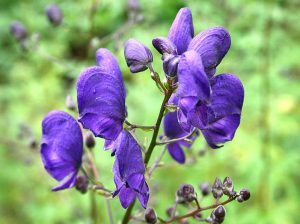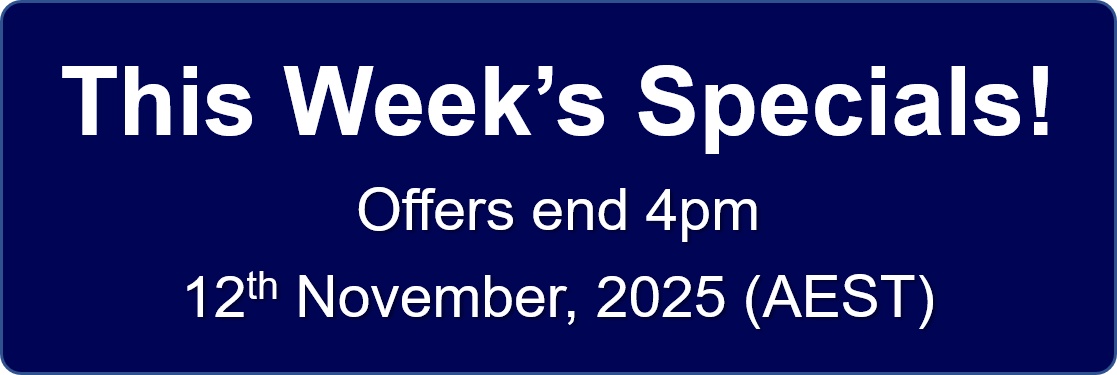Aconite napellus (Acon.)

Aconite napellus is a purple flowering plant found in Western and Central Europe. It is known by the common names of monkshood (because of the shape of the flower) or wolfsbane (because of its use in hunting). It has a long history of use as a poison and was often used on arrow and spear tips during hunting.
Homeopathic Aconite is well-known for its use in acute complaints rather than chronic conditions but occasionally is needed there also. A key feature of Aconite is the sudden onset of intense symptoms in which the person the person is restless, fearful and thinks they may die. They desire company; anxiety increases when alone. Physical complaints may be triggered by an earlier exposure to cold, dry air in which the person was chilled.
Common Uses
When the remedy matches the symptom profile, Aconite has the ability to treat conditions such as ear pain, influenza, panic attacks, shock, croup, angina, myocardial infarction, neuralgia, and urinary retention.
From the Old Masters
Lippe Says:
MIND AND DISPOSITION
- Great, inconsolable anxiety.
- Complaining fear of approaching death ; predicts the day he is to die.
- Sensitive irritability.
- Sadness.
- Maliciousness.
- Fitful mood, changing from one thing to another ; now he is full of mirth, whistles and warbles a song ; and then he is disposed to weep.
- Delirium, especially at night -with ecstasy.
- Fear of ghosts.
GENERALITIES
- Fainting, especially when rising, with paleness of the cheeks, which were red when lying.
- Sudden great sinking of strength.
- Lameness (paralysis) (left side).
- Cataleptic attacks, with rigor of the body, loud lamentations and grinding of the teeth.
- Burning in internal parts.
- Congestions (head, chest, heart).
- Inflammations (serous membranes).
- Stinging pains in internal organs.
- Tearing in external parts (Rheumatism).
- Tingling (fingers, œsophagus, cheeks, back).
- Painful sensitiveness of the body to contact : he does not wish to be touched.
- Attacks of pain, with thirst and redness of the face.
CONDITIONS
- While at rest, he is better ; but during the night, in bed, the pain is insupportable.
- Bad effects from dry cold air, suppressed perspiration, from fright, with fear and anger.
- Aggravation in the evening (chest symptoms) when lying on the (left) side ; when rising ; in the warm room.
- Amelioration. In the open air (nervous symptoms) ; when sitting still (rheumatism).
Hering Says:
MIND
- Absent-mindedness ; weakness of memory ; cannot remember dates.
- Clairvoyance, perception of distant things.
- Ecstasy ; fancies ; delirium, especially at night.
- Changing mood, now full of mirth now disposed to tears.
- Afraid of a crowd or of crossing busy streets.
- Fear of ghosts ; of loss of reason ; apprehensive of the future.
- Fear of approaching death ; predicts the day.
- Anxiety inconsolable, piteous wailing ; reproaches others for the mere trifles ; peevish, impatient ; pusillanimity.
- Anxiety, restless, agonized tossing about.
- Oversensitive ; cannot bear light or noise ; buzzing in the ears ; will not be touched or uncovered.
- Mood peevish, irritable, malicious ; or sad, desponding.
- After a fright, afraid in the dark. After fright with vexation or anger, heat, congestions, threatened abortion ; ailments from fright following later.
- Ailments from anger ; from chagrin ; child has spells of rage.
- Imagines some part of the body is deformed, thinks from the stomach.
SENSATIONS
- Burning, tingling and numbness.
- Coldness and retarded venous circulation.
- Oversensitive to pain ; pains, especially at night, seem insufferable.
TISSUES
- Increased action of serous membranes, reddening their capillary vessels.
- Arterial system dominant ; has but little effect on changed blood corpuscles ; of no use in typhoid states.
- Congestions with the mind symptoms.
- Housemaid’s knee, acute symptoms.
- Glands painful, hot swollen.
- Burning through all the mucous membranes.
STAGES AND STATES
- Children’s diseases, with high fever.
- Dark hair and eyes.
- Persons leading a sedentary life.
- Old age ; sleeplessness.
- Especially persons with tonicity (rigidity) of fibre.
- Contra-indicated in fevers which bring out eruptions or are otherwise salutary, unless there is agonizing tossing with dry skin.
- Fear of death; of crowds; of going out. Anything, always fearful.
- Complaints from exposure to cold, dry cold.
- Congestions and inflammations, acute, first stage with great anxiety, heat and restlessness; tosses about in agony; throws off covering. Inflammatory fever.
- Pains insuppressable < at night, especially in the evening; neuralgic.
- Face very red and flushed, but turns pale on rising up.
- Favorite points of attack: Larynx (crop), bronchi (bronchitis), lungs and pleura (pneumonia and pleurisy), joints (rheumatism), heart and circulation (erethism).
- Modalities: < in the evening (chest symptoms and pains); lying on left side; in warm room or warm covering. > uncovering; kicks the clothes off.
Nash Says:
- Fear of death; of crowds; of going out. Anything, always fearful.
- Complaints from exposure to cold, dry cold.
- Congestions and inflammations, acute, first stage with great anxiety, heat and restlessness; tosses about in agony; throws off covering. Inflammatory fever.
- Pains insuppressable < at night, especially in the evening; neuralgic.
- Face very red and flushed, but turns pale on rising up.
- Favorite points of attack: Larynx (crop), bronchi (bronchitis), lungs and pleura (pneumonia and pleurisy), joints (rheumatism), heart and circulation (erethism).
- Modalities: < in the evening (chest symptoms and pains); lying on left side; in warm room or warm covering. > uncovering; kicks the clothes off.
Sources
- Textbook of Materia Medica by Adolph Lippe M.D. 1886 Publishers: AJ.Tafel
- Constantine Hering. 1877. Condensed Materia Medica. Publishers: Boericke and Tafel
- E. B. NASH. 1899 Leaders In Homoeopathic Therapeutics. Publishers: Boericke and Tafel




